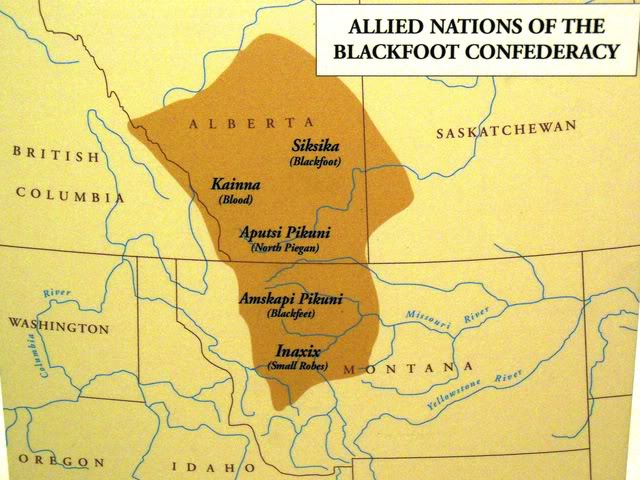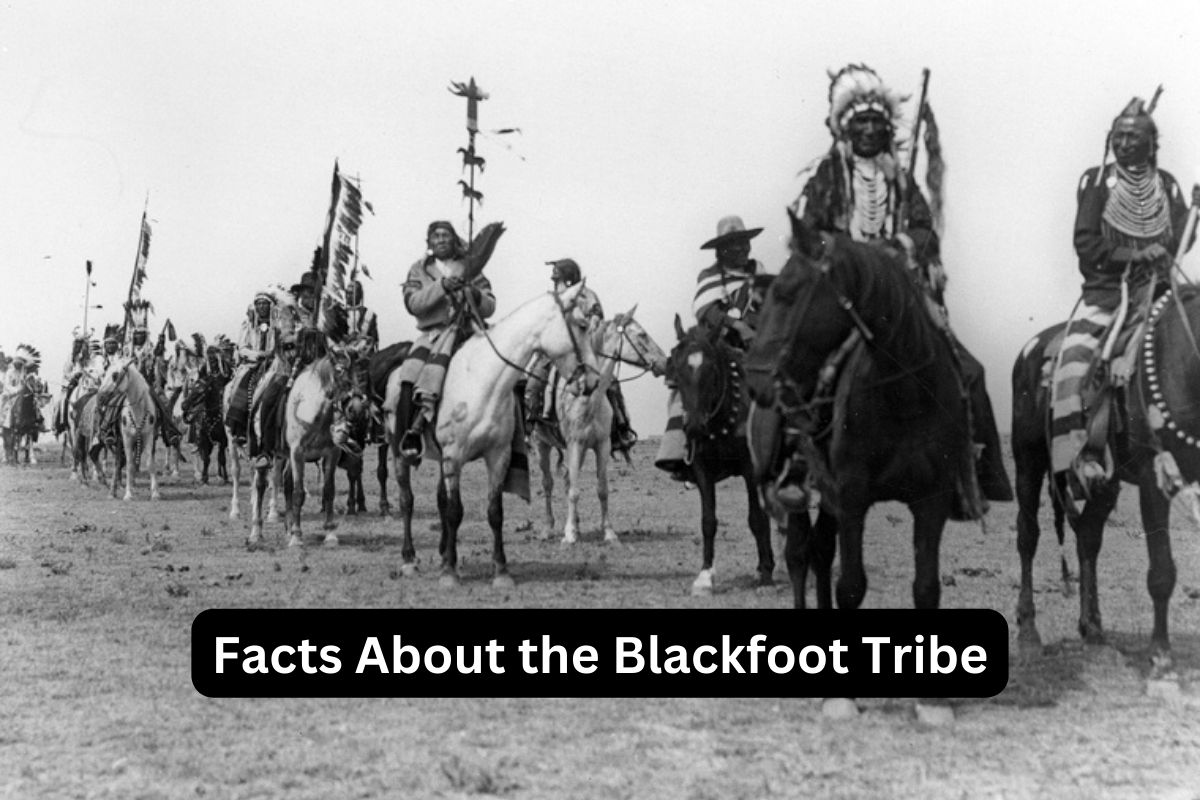
Guardians of the Plains: The Enduring Historical Power of the Blackfoot Confederacy
The vast, windswept plains of North America, stretching from the Rocky Mountains eastward, once thrummed with the energy of a formidable Indigenous nation: the Blackfoot Confederacy. Far from being mere inhabitants, the Siksika (Blackfoot), Kainai (Blood), and Piikani (Peigan) nations, bound by a shared language, culture, and destiny, forged an empire of unparalleled power and influence across what is now Alberta, Saskatchewan, and Montana. Their history is not just one of survival, but of dominance, a testament to their strategic brilliance, military prowess, economic ingenuity, and unyielding spirit.
To understand the Blackfoot Confederacy’s historical power is to look beyond romanticized notions of the "noble savage" and instead recognize them as sophisticated political, economic, and military actors who shaped the destiny of the Northern Plains for centuries. Their power was multi-faceted, rooted in a deep connection to their ancestral lands, mastery of their environment, and an intricate social structure that allowed for both autonomy and unity.
Masters of a Vast Domain: The Geographical Imperative
At its zenith, "Blackfoot Country" was an expansive domain, estimated to be over 100,000 square miles. This territory, rich in biodiversity, particularly the migratory herds of bison, was not merely occupied but actively controlled. The Confederacy strategically positioned itself to command critical resources and trade routes. Their lands encompassed prime hunting grounds, vital waterways, and natural defensive barriers, giving them a significant advantage over rival nations.
"The Blackfoot were the undisputed masters of the northern plains," notes historian Hugh Dempsey, a leading authority on the Blackfoot. "Their territory was respected, their prowess feared, and their way of life adapted to extract the maximum from their environment." This geographical dominance was not accidental; it was the result of deliberate expansion and steadfast defense, establishing them as a paramount force.

The Thundering Hooves: Military Prowess and Strategic Acumen
The Blackfoot Confederacy’s military might was legendary. Before the advent of horses, they were skilled foot hunters and warriors, renowned for their strategic use of terrain and ambush tactics. However, the introduction of the horse in the early 18th century utterly transformed their power. The Blackfoot were among the first Indigenous nations on the northern plains to acquire horses, which they quickly mastered, becoming expert riders and horse breeders.
This equine revolution provided unprecedented mobility, enhancing their hunting efficiency and, crucially, their military capabilities. Mounted Blackfoot warriors could cover vast distances, conduct swift raids, and effectively pursue or evade enemies. Their mastery of horsemanship was combined with an early adoption of firearms, acquired through trade. This combination of horses and guns, wielded by disciplined warrior societies such as the Horn Society and the Dog Soldiers, made them a formidable force.
Their military encounters with neighboring tribes – including the Cree, Crow, Kutenai, and Flathead – often resulted in Blackfoot victories, solidifying their territorial claims and reputation. These weren’t random skirmishes; they were often strategic campaigns to secure hunting grounds, defend trade routes, or retaliate against incursions. The fear and respect they commanded among their neighbors were tangible markers of their military power.
The Bison Economy: Sustenance and Wealth
The heart of Blackfoot power, both literally and metaphorically, was the bison. This magnificent animal provided everything: food, shelter (tipis), clothing, tools, and spiritual sustenance. The Blackfoot developed highly sophisticated hunting techniques, including the use of buffalo jumps (piskun) and large-scale surrounds, demonstrating remarkable collective organization and ecological knowledge.
The bison economy was not merely about subsistence; it was a source of immense wealth and power. Excess bison products, particularly dried meat and pemmican, were highly sought-after trade goods. The Blackfoot controlled crucial trade networks, exchanging pemmican, hides, and furs for European goods like firearms, metal tools, and beads. This control allowed them to dictate terms of trade with early European traders, including the Hudson’s Bay Company and the North West Company, often playing them against each other to their advantage.
"The Blackfoot held the balance of power in the trade relations on the northern plains for a long time," states anthropologist Walter McClintock. "They were shrewd negotiators, ensuring they received the best goods for their valuable products, which cemented their economic leverage." Their economic power was the engine that fueled their military strength and allowed them to maintain their independence.
A Confederacy of Strength: Political Organization and Diplomacy

The Blackfoot Confederacy was not a monolithic state but a complex political alliance of distinct, yet closely related, nations. Each of the three main nations – Siksika, Kainai, and Piikani – maintained its autonomy, led by its own chiefs and councils. However, they shared a common language (Blackfoot, an Algonquian language), a rich cultural heritage, and a commitment to mutual defense and shared interests.
This decentralized structure provided both flexibility and strength. It allowed for individual nations to pursue their interests while presenting a united front against external threats. Major decisions affecting the entire Confederacy were often made through consensus among the leading chiefs. Warrior societies played a crucial role not only in warfare but also in maintaining order and enforcing decisions within the camps.
Their political acumen extended to diplomacy. While formidable warriors, the Blackfoot also engaged in complex diplomatic relations, forming alliances when advantageous and negotiating treaties when necessary. Their ability to manage internal dynamics and external relations demonstrated a sophisticated understanding of governance and power projection.
Cultural Resilience and Spiritual Connection
Beyond military and economic might, the Blackfoot Confederacy’s power was deeply rooted in its vibrant culture and spiritual connection to the land. Their rich oral traditions, ceremonies, and worldview provided a powerful sense of identity and continuity. The Sun Dance (Okipa), their most sacred ceremony, served as an annual reaffirmation of their spiritual beliefs, communal bonds, and connection to the cosmos.
This cultural strength fostered resilience, allowing them to withstand immense pressures. Their understanding of the land, the migratory patterns of the bison, and the intricate web of life sustained them physically and spiritually. This intrinsic power, often overlooked by Western perspectives, was fundamental to their ability to endure and thrive in a challenging environment.
Challenges and Transformations: The Shifting Sands of Power
The mid-19th century brought unprecedented challenges that began to erode the Blackfoot Confederacy’s traditional power. The most devastating blow came in the form of European diseases, particularly smallpox. The 1837-38 smallpox epidemic, for example, decimated their population, weakening their military and social structures. It is estimated that up to two-thirds of the Blackfoot population perished, a catastrophic loss that profoundly altered the balance of power on the plains.
Simultaneously, the relentless westward expansion of settlers, the gold rushes, and the systematic destruction of the bison herds by non-Indigenous hunters marked the end of their traditional way of life. The buffalo, once an inexhaustible resource, vanished with alarming speed, collapsing the Blackfoot economy and forcing them into dependency.
Faced with overwhelming pressure, dwindling resources, and a dramatically reduced population, the Blackfoot Confederacy entered into treaties with the Canadian and American governments (most notably Treaty 7 in Canada in 1877). These treaties, often misunderstood and unevenly applied, led to the cession of vast territories and the confinement of the nations to reserves. The subsequent implementation of assimilationist policies, such as the Indian Act and the residential school system, further sought to dismantle their cultural and political structures.
A Legacy of Enduring Power
Despite these profound challenges and the immense suffering inflicted by colonialism, the Blackfoot Confederacy has demonstrated an enduring power: the power of resilience. They never truly relinquished their identity, their cultural practices, or their connection to their ancestral lands.
Today, the Siksika Nation, Kainai Nation, and Piikani Nation (in Canada), and the Blackfeet Nation (in the United States) continue to thrive. They are actively engaged in revitalizing their languages, preserving their ceremonies, and asserting their inherent rights. They are leaders in self-governance, economic development, and cultural reclamation, demonstrating that their historical power was not just about military might or territorial control, but about an unyielding spirit and a profound sense of identity.
The story of the Blackfoot Confederacy is a crucial chapter in North American history. It is a story not of a primitive people, but of a sophisticated, powerful nation that dominated a vast landscape, shaped by strategic genius, economic prowess, and cultural depth. Their historical power, though challenged and transformed, continues to resonate in the strength and determination of the Blackfoot people today, standing as a testament to their enduring legacy as the true guardians of the plains.


